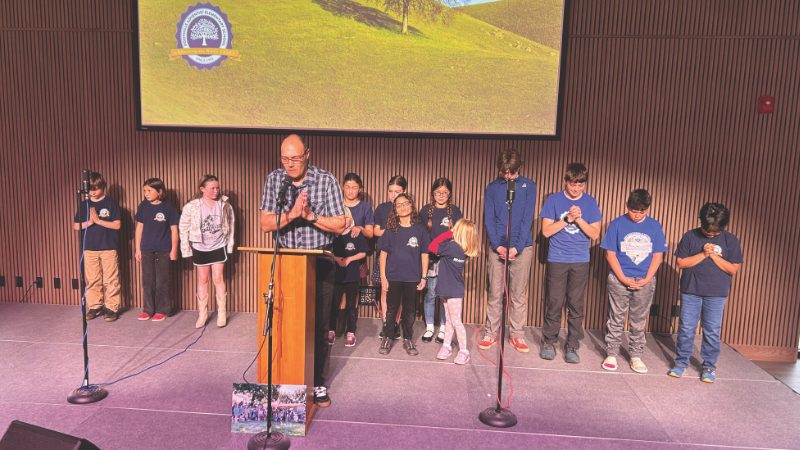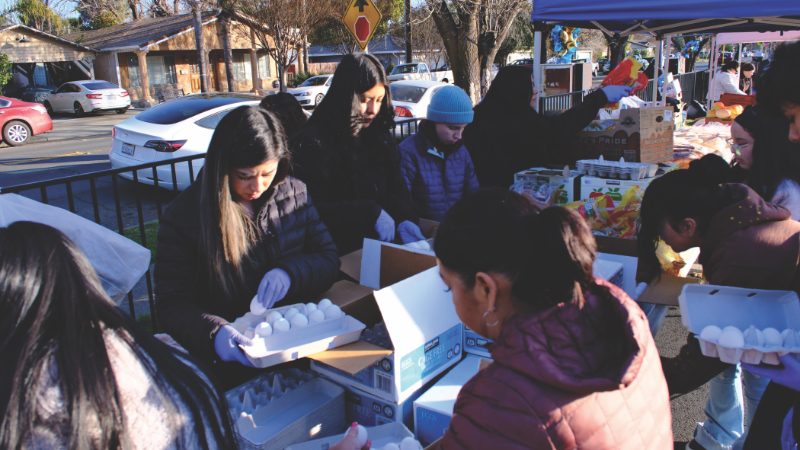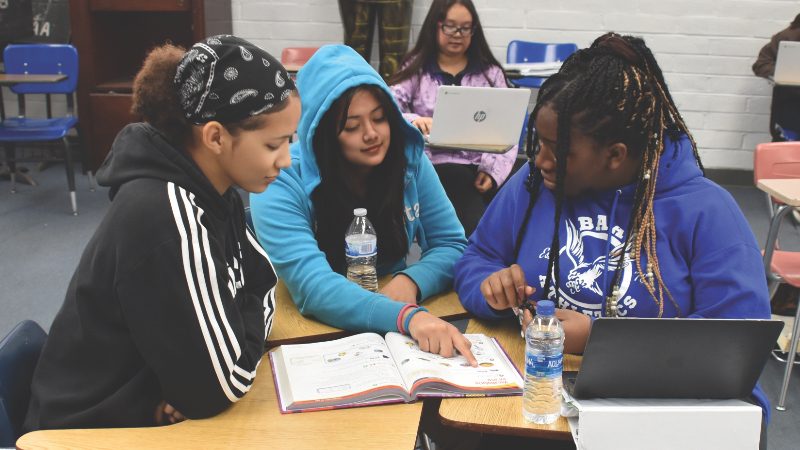
My paternal grandmother was partially responsible for my love of history. Carrie Isabel Woodson was a woman of dignity who took pride in her family and her heritage. She was the granddaughter of an enslaved man from Virginia, Henry Raddick, who changed the name of his family after being set free by Lincoln’s Emancipation Proclamation. As the story goes, once he was a free man, Henry refused to take on his former master’s surname as a way of protesting the harsh treatment he had received over the years. “I don’t want us to be known by ol’ massa’s name,” he proclaimed, and so he made up the name Raddick.
This and many other family stories I heard from Grandmother Woodson. I had the privilege of hearing most of these stories during visits to her home in Compton, California, where she had moved from Topeka, Kansas, not long after her husband, Leslie, passed away in 1958. She was an amiable lady and had exceptional storytelling skills. There were many moments as a young boy that I sat riveted by her interesting tales of family lore.
However, there was also a family story about my grandmother that was recounted to me by my parents. The details of the story were a little hazy, but it was something about my grandmother writing a letter to Adventist church officials protesting the treatment of Negro students at Union College in Lincoln, Nebraska, where my father, Milton, attended. I didn’t remember what the issues were, but I do remember my parents making the case that my grandmother wasn’t afraid to speak out against racial injustice. I was proud of that quality in her. To think of my 4-foot, 11-inch grandmother speaking truth to power was a vision I could hardly fathom. Was this story just a piece of family legend or was it true? I wasn’t really sure until recently.

In the fall of 2023, I received a copy of the book Change Agents written by Douglas Morgan and published by Oak and Acorn, the Pacific Union Conference’s publishing division.1 The subject of the book was captivating. It’s subtitle alone captured my attention: “The Lay Movement that Challenged the System and Turned Adventism Toward Racial Justice.” Morgan chronicles in his book the rise of Black Adventism, African American Adventists’ long quest for racial justice and equality, and the complex history of why and how regional conferences were established in the 1940s. It is a great read.During the Pacific Union’s Administrators Retreat last year, where the executive officers of each of the seven conferences that comprise our union come together with their families for inspiration and rest, I found some downtime to relax on Sabbath afternoon in the hotel room. I picked up where I had left off reading Change Agents. In Chapter Seven, entitled “Tragic Reversal II: The Rising Evil of Prejudice,” Morgan focuses on the racial discrimination and injustice that was prevalent in our educational and health institutions at that time. While reading these words, “Amidst hopeful signs of progress in American society at large, racial prejudice at Adventist institutions was worsening,”2 my thoughts quickly raced to Grandmother Woodson and the recounted story of her protest letter. The next sentence really made me think of the story, “Citing recent instances of heightened discriminatory policies at Atlantic Union College, Emmanuel Missionary College, and Union College, schools that had been touted—and to a limited yet meaningful degree had functioned—as places where Black students might find opportunity, [G. E.] Peters pled for action from the top leadership of the General Conference.”3 Then it came like a lightning bolt in the next paragraph: “Mrs. Leslie Woodson, whose son Milton, a pre-med student who along with five other Black students, was being subjected to dining hall segregation at Union College, expressed a widely-shared mood when she wrote Peters in December 1943: ‘I have been an Adventist twenty-eight years and I have never been as discouraged as now.’”4 Wow! There it was. The family story was true, and Morgan had corroborated it.
I could hardly believe what I was reading right there in the hotel room on a Sabbath afternoon in a book on the pursuit of racial justice in Adventism. There was my grandmother—Mrs. Leslie Woodson (at that time wives were often referred to by their husband’s name) and my father, her son, Milton, right there on page 157! I nearly fell out of my chair in sheer excitement! After gaining composure, my mind raced to lots of questions. Where did Morgan get this information? Does the letter she wrote still exist? What made him decide to use this piece of my family’s history? I had to know the answers.

The next day, after getting Morgan’s contact information, I gave him a call and introduced myself as an admirer and the grandson of Mrs. Leslie Woodson (Carrie) and the son of Milton mentioned in his book. After a delightful and gracious conversation, he informed me that he would be glad to email me a copy of the December 1943 letter written by my grandmother in her own hand that he had discovered in the General Conference Archives. He did so that very day. Imagine the delight of seeing my grandmother’s own words and handwriting. I read her entire letter, of which the book only gives an excerpt. In some ways it was heartbreaking that a faithful Adventist woman would have to write such a letter to her church leaders, pleading for something to be done about discrimination, and to hear of her discouragement. At the same time, I was proud of this faithful Adventist woman who refused to turn a blind eye while the church she loved and served practiced the “evil of prejudice.”
As a Seventh-day Adventist Church pastor and administrative leader for nearly 37 years, I am glad that our church has made critical improvements in racial relations since then. Before she died in 1981, Grandmother Woodson witnessed some of those changes—such as seeing the North American Division elect its first African American president, Charles E. Bradford, whose grandfather, Robert Bradford, it so happened sold my grandmother’s mother, Anna Raddick, a copy of The Great Controversy by Ellen G. White. It was how my father’s family eventually became Adventists.
Our church today is far from perfect when it comes to racial relations, and there is still some progress to be made. But I hope that when we see injustices being perpetrated by church leaders or institutions who should know better, we would not give up, but we would instead courageously rise up and speak truth to power. Thank you, Grandmother Carrie Woodson, for giving us that important example.
_____________________________
Marc K. Woodson is the president of the Northern California Conference.
1 Douglas Morgan, Change Agents: The Lay Movement that Challenged the System and Turned Adventism Toward Racial Justice (Westlake Village, CA: Oak & Acorn Publishing, 2020).
2 Morgan, Change Agents, p. 156.
3 Morgan, Change Agents, p. 156; emphasis added.
4 Morgan, Change Agents, p. 157.
Una historia de la familia
Por Marc K. Woodson

Mi abuela paterna fue en parte responsable por mi amor por la historia. Carrie Isabel Woodson era una mujer digna que se enorgullecía de su familia y de su legado. Era nieta de un esclavo de Virginia, Henry Raddick, quien cambió el nombre de su familia después de ser liberado por la Proclamación de Emancipación del presidente Lincoln. Según cuenta la historia, una vez que fue un hombre libre, Henry se negó a adoptar el apellido de su antiguo amo como una forma de protesta por el duro trato que había recibido a lo largo de los años. «No quiero que nos conozcan por el nombre del viejo Massa», proclamó y así se inventó el apellido Raddick.
Escuché esa y muchas otras historias familiares de la abuela Woodson. Tuve el privilegio de escuchar la mayoría de esas historias durante las visitas a su casa en Compton, California, donde se había mudado desde Topeka, Kansas, poco después de que su esposo, Leslie, falleciera en 1958. Era una dama amable y tenía habilidades excepcionales para contar historias. Hubo muchos momentos cuando era niño en los que me senté fascinado por sus interesantes historias de la tradición familiar.
Sin embargo, también había una historia familiar sobre mi abuela que me contaron mis padres. Los detalles de la historia eran un poco confusos, pero se trataba de mi abuela escribiendo una carta a los funcionarios de la Iglesia Adventista en protesta por el trato que recibían los estudiantes negros en Union College en Lincoln, Nebraska, donde asistía mi padre, Milton. No recuerdo cuáles eran los problemas, pero sí recuerdo a mis padres argumentando que mi abuela no tenía miedo de hablar en contra de la injusticia racial. Estaba orgulloso de esa cualidad en ella. Pensar en mi abuela de 4 pies y 11 pulgadas diciéndole la verdad a las autoridades era una visión que apenas podía comprender. ¿Era esa historia solo una leyenda familiar o era cierta? No estuve muy seguro hasta hace poco.

En el otoño de 2023, recibí una copia del libro Change Agents [agentes de cambio] escrito por Douglas Morgan y publicado por Oak and Acorn, la casa editorial de la Pacific Union Conference.1 El tema del libro era cautivador. El subtítulo mismo del libro captó mi atención: «El movimiento laico que desafió al sistema y llevó al adventismo hacia la justicia racial». Morgan narra en su libro el surgimiento del adventismo negro, la larga búsqueda de los adventistas afroamericanos por la justicia y la igualdad racial, y la compleja historia de por qué y cómo se establecieron las conferencias regionales en la década de 1940. Su lectura es cautivadora.
Durante el retiro de administradores de la Pacific Union el año pasado, cuando los funcionarios ejecutivos de cada una de las siete conferencias que componen nuestra unión se reúnen con sus familias para inspirarse y descansar, encontré un tiempo de inactividad para relajarme el sábado por la tarde en la habitación del hotel. Retomé la lectura donde la había dejado en Change Agentes. En el capítulo siete, titulado «Trágica reversión II: el creciente mal de los prejuicios», Morgan se centra en la discriminación racial y la injusticia que prevalecían en nuestras instituciones educativas y de salud en ese momento. Al leer estas palabras: «En medio de señales esperanzadas de progreso en la sociedad estadounidense en general, el prejuicio racial en las instituciones adventistas estaba empeorando»,2 mis pensamientos se dirigieron rápidamente a mi abuela Woodson y a la historia contada de su carta de protesta. La siguiente frase realmente me hizo pensar en la historia: «Citando casos recientes de políticas discriminatorias intensificadas en Atlantic Union College, Emmanuel Missionary College y Union College, escuelas que habían sido promocionadas, y en un grado limitado pero significativo habían funcionado, como lugares donde los estudiantes negros podrían encontrar oportunidades, [G. E.] Peters suplicó que se tomaran medidas de los principales líderes de la Conferencia General».3
Después me llegó como un relámpago el siguiente párrafo: «La Sra. Leslie Woodson, cuyo hijo Milton, un estudiante de pre-médica que, junto con otros cinco estudiantes negros, estaba siendo sometido a la segregación en los comedores de Union College, expresó un estado de ánimo ampliamente compartido cuando le escribió a Peters en diciembre de 1943: “He sido adventista por veintiocho años y nunca he estado tan desanimada como ahora”».4 ¡Wau! Ahí estaba. La historia de la familia era cierta y Morgan la había corroborado.
Apenas podía creer lo que estaba leyendo ahí mismo, en la habitación del hotel, un sábado por la tarde, en un libro sobre la búsqueda de la justicia racial en el adventismo. Ahí estaba mi abuela, la señora Leslie Woodson (en aquella época a menudo se hacía referencia a las esposas por el nombre de su marido) y mi padre, su hijo, Milton, ¡ahí mismo, en la página 157! ¡Casi me caigo de la silla de pura emoción! Después de recuperar la compostura, mi mente se apresuró a hacer muchas preguntas. ¿De dónde sacó Morgan esa información? ¿Existe todavía la carta que escribió mi abuela? ¿Qué lo motivo a usar esa parte de la historia de mi familia? Tenía que saber las respuestas.

Al día siguiente, después de obtener la información para ponerme en contacto con Morgan, lo llamé y me presenté como un admirador y el nieto de la Sra. Leslie Woodson (Carrie) y el hijo de Milton mencionado en su libro. Después de una conversación amable y cortés, me informó que estaría encantado de enviarme por correo electrónico una copia de la carta escrita por mi abuela de su puño y letra que había descubierto en los archivos de la Conferencia General. Lo hizo ese mismo día. Imagínese el deleite de ver las palabras y la letra de mi abuela. Leí toda la carta, de la que el libro sólo da un extracto. De alguna manera, fue desgarrador que una fiel mujer adventista tuviera que escribir una carta así a los líderes de su iglesia, suplicando que se hiciera algo contra la discriminación, y que se escuchara su desaliento. Al mismo tiempo, me sentí orgullosa de esa fiel mujer adventista que se negó a hacerse de la vista gorda mientras la iglesia que amaba y servía practicaba el «mal del prejuicio».
Como pastor y líder administrativo de la Iglesia Adventista durante casi 37 años, me alegra que nuestra iglesia haya logrado mejoras críticas en las relaciones raciales desde entonces. Antes de morir en 1981, mi abuela fue testigo de algunos de esos cambios, pudo ver a la División Norteamericana elegir a su primer presidente afroamericano, Charles E. Bradford, cuyo abuelo, Robert Bradford, le vendió a la madre de mi abuela, Anna Raddick, una copia de El conflicto de los siglos por Ellen G. White. Así fue como la familia de mi padre finalmente se convirtió en adventista.
Nuestra iglesia está lejos de ser perfecta en lo que respecta a las relaciones raciales y todavía hay algún progreso que lograr. Pero espero que cuando veamos injusticias perpetradas por líderes o instituciones de la iglesia que deberían saber más, no nos demos por vencidos, sino que nos levantemos valientemente y les digamos la verdad a las autoridades. Gracias, abuela Carrie Woodson, por darnos ese importante ejemplo.
_____________________________
Marc K. Woodson es el presidente de la Northern California Conference
1 Douglas Morgan, Change Agents: The Lay Movement that Challenged the System and Turned Adventism Toward Racial Justice (Westlake Village, CA: Oak & Acorn Publishing, 2020).
2 Morgan, Change Agents, p. 156.
3 Morgan, Change Agents, p. 156; énfasis añadido.
4 Morgan, Change Agents, p. 157.






